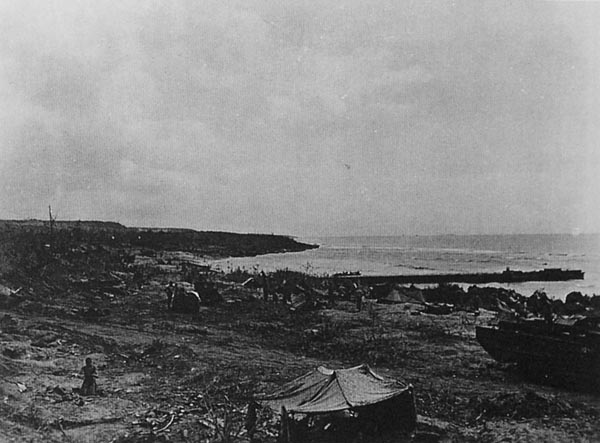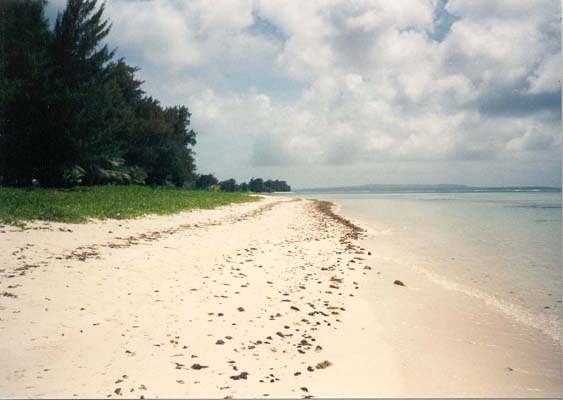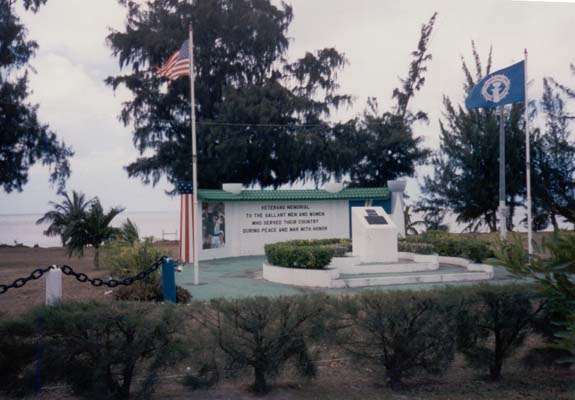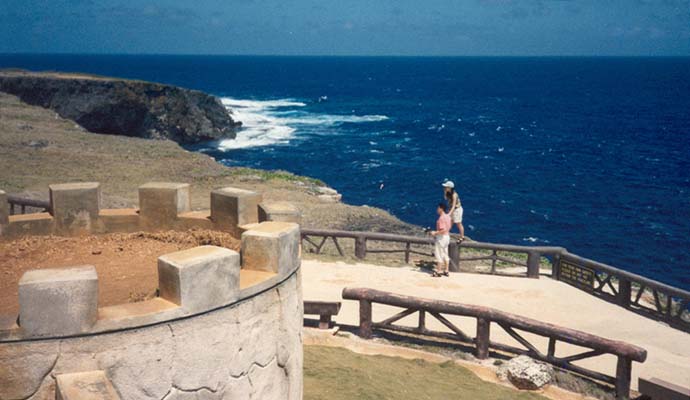joespaniel
Unescorted Settler
On June 15, 1944, the week after the invasion of Normandy, an armada of 535 ships converged on the Japanese islands of Saipan and Tinian. 7 American battleships and 11 destroyers began shelling the islands on the first day, joined by 8 more battleships, 6 heavy cruisers and 5 light cruisers on the second day. 15,000 16" shells and 165,000 other shells rained down on the islands within 48 hours.
The 2nd and 4th Marine Divisions with the Army's 27th Infantry Division were ferried to Chalan Kanoa by armored amphibian tractors (LVTs). They were accompanied by light gunboats firing 4.5" rockets, 20mm and 40mm guns. The LVTs negotiated the reef, but the gunboats could not and were forced to turn back.
Before the troops even hit the beach they came under punishing artillery fire from the reverse slopes of Mount Fina Susu. Their plan to ride the LVTs across the beach was defeated by too many natural obstacles and withering enemy fire. Many tanks and LVTs were knocked out. The Americans had to do it the old-fashioned way, dismounted. Casualties were very heavy but a beachhead was secured by nightfall.
Japanese infantry and tanks made several counter-attacks within the first 24 hours, all of which were repulsed but at heavy cost to both sides. Most of the fighting was hand to hand. There was one attack in the 4th Marine Division zone screened by a front of civilians.
Day after day, the Americans moved forward inch by inch, pillbox by pillbox, villiage by villiage. It was a contest all the way. The Japanese felt they had to hold the island after their previous losses of Tarawa and Kwajalein. Saipan was also considered "home territory" by the Japanese, who aquired it via the Versailles Treaty in 1919. To the Americans, Saipan was the key to unlocking the inner defensive line of Japan, just over 1000 miles away now (it was 3500 miles from Pearl Harbor).
On July 9th, after 24 days of bloody, brutal fighting, organized resistance ceased. The victorious Americans took stock of their conquest and it's cost: Of the 71,034 US troops landed on Saipan, 3,100 were killed and 13,100 were wounded or missing in action. Of the 31,629 Japanese soldiers on Saipan, approximately 29,500 died fighting or committed suicide and 2100 prisoners survived.
One of the horrible events resulting from the invasion was the mass suicide of hundreds of Japanese families, many of whom jumped to their deaths from the cliffs of Saipan's north point. This tragedy could not be stopped, despite efforts by Americans and Saipanese using loudspeakers to convince the Japanese that surrender would be shameless and harmless.
Saipan was the first piece of Japanese real estate to be conquered by the Americans in WWII. Much was learned about dealing with the Japanese civilian population. The whole experience (combined with the invasions of Guam, Iwo Jima and Okinawa) contributed to the decision to use the atomic bomb rather than attempt an invasion of the Home Islands in 1945.
The 2nd and 4th Marine Divisions with the Army's 27th Infantry Division were ferried to Chalan Kanoa by armored amphibian tractors (LVTs). They were accompanied by light gunboats firing 4.5" rockets, 20mm and 40mm guns. The LVTs negotiated the reef, but the gunboats could not and were forced to turn back.
Before the troops even hit the beach they came under punishing artillery fire from the reverse slopes of Mount Fina Susu. Their plan to ride the LVTs across the beach was defeated by too many natural obstacles and withering enemy fire. Many tanks and LVTs were knocked out. The Americans had to do it the old-fashioned way, dismounted. Casualties were very heavy but a beachhead was secured by nightfall.
Japanese infantry and tanks made several counter-attacks within the first 24 hours, all of which were repulsed but at heavy cost to both sides. Most of the fighting was hand to hand. There was one attack in the 4th Marine Division zone screened by a front of civilians.
Day after day, the Americans moved forward inch by inch, pillbox by pillbox, villiage by villiage. It was a contest all the way. The Japanese felt they had to hold the island after their previous losses of Tarawa and Kwajalein. Saipan was also considered "home territory" by the Japanese, who aquired it via the Versailles Treaty in 1919. To the Americans, Saipan was the key to unlocking the inner defensive line of Japan, just over 1000 miles away now (it was 3500 miles from Pearl Harbor).
On July 9th, after 24 days of bloody, brutal fighting, organized resistance ceased. The victorious Americans took stock of their conquest and it's cost: Of the 71,034 US troops landed on Saipan, 3,100 were killed and 13,100 were wounded or missing in action. Of the 31,629 Japanese soldiers on Saipan, approximately 29,500 died fighting or committed suicide and 2100 prisoners survived.
One of the horrible events resulting from the invasion was the mass suicide of hundreds of Japanese families, many of whom jumped to their deaths from the cliffs of Saipan's north point. This tragedy could not be stopped, despite efforts by Americans and Saipanese using loudspeakers to convince the Japanese that surrender would be shameless and harmless.
Saipan was the first piece of Japanese real estate to be conquered by the Americans in WWII. Much was learned about dealing with the Japanese civilian population. The whole experience (combined with the invasions of Guam, Iwo Jima and Okinawa) contributed to the decision to use the atomic bomb rather than attempt an invasion of the Home Islands in 1945.














 . The 'shield' one is awesome
. The 'shield' one is awesome  .
. . I also liked the beach pics
. I also liked the beach pics  .
.